Powerpoint presentation
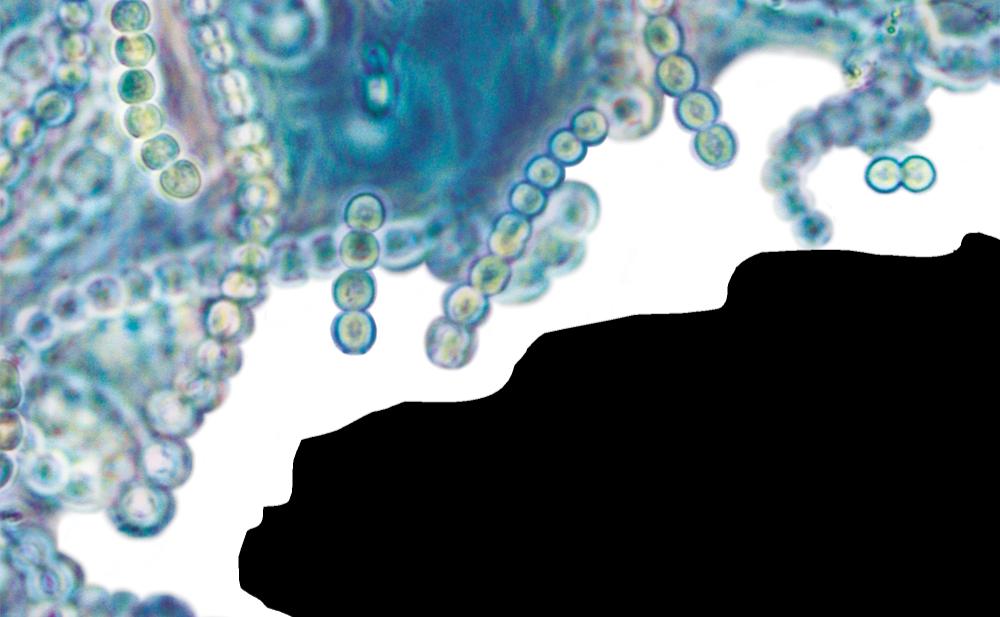
For BROCK BIOLOGY OF MICROORGANISMS, THIRTEENTH EDITION
Michael T. Madigan, John M. Martinko, David A. Stahl, David P. Clark
Chapter 26
Microbial Growth
Lectures by
John Zamora
Middle Tennessee State University
2012 Pearson Education, Inc.
Microbial Growth Control
• Sterilization
– The killing or removal of all viable organisms
within a growth medium
• Inhibition
– Effectively limiting microbial growth
– The treatment of an object to make it safe to
• Disinfection
– Directly targets the removal of all pathogens, not
necessarily all microorganisms
2012 Pearson Education, Inc.
Marmara University – Enve303 Env. Eng. Microbiology – Prof. BARIŞ ÇALLI
Microbial Growth Control
• Disinfectant
– Specialized chemical or physical agents called
disinfectants can kill microorganisms or inhibit microbial growth.
– e.g. chlorine gas and sodium hypochlorite solution
are used to disinfect drinking water.
2012 Pearson Education, Inc.
Marmara University – Enve303 Env. Eng. Microbiology – Prof. BARIŞ ÇALLI
I. Physical Antimicrobial Control
• 26.1 Heat Sterilization• 26.2 Radiation Sterilization• 26.3 Filter Sterilization
2012 Pearson Education, Inc.
Marmara University – Enve303 Env. Eng. Microbiology – Prof. BARIŞ ÇALLI
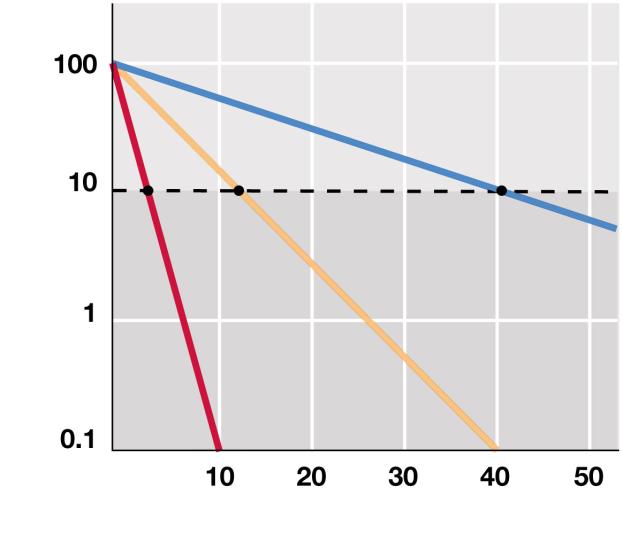
26.1 Heat Sterilization
• Heat sterilization is the most widely used method
of controlling microbial growth (Figure 26.1)
– High temperatures denature macromolecules– Amount of time required to reduce viability tenfold
is called the decimal reduction time (Figure 26.2)
• Some bacteria produce resistant cells called
– Can survive heat that would rapidly kill vegetative
2012 Pearson Education, Inc.
Marmara University – Enve303 Env. Eng. Microbiology – Prof. BARIŞ ÇALLI
Figure 26.1 The effect of temperature over time on the viability of a mesophilic bacterium
Time (min)
The decimal reduction time, D, is the time at which only 10% of the original
population of organisms remains viable at a given temperature.
For 70oC, D = 3 min; for 60oC, D = 12 min; for 50oC, D = 42 min.
2012 Pearson Education, Inc.
Marmara University – Enve303 Env. Eng. Microbiology – Prof. BARIŞ ÇALLI
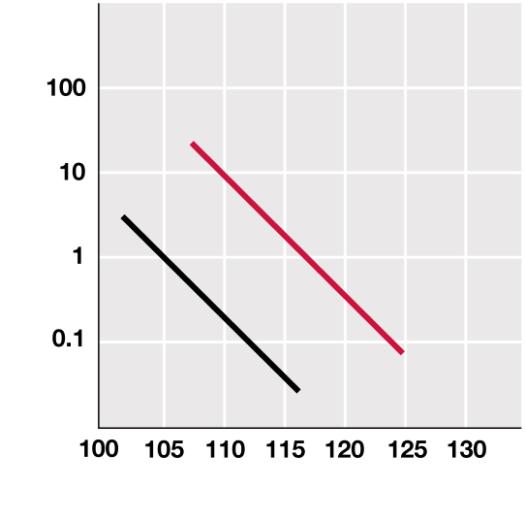
Figure 26.2 The relationship between temperature and the rate of killing in mesophiles and thermophiles
)
ni
m( emit noi
Data were obtained for decimal reduction times, D, at several different
temperatures. For organism A, a typical mesophile, exposure to 110oC for less
than 20 sec resulted in a decimal reduction, while for organism B, a thermophile,
10 min was required to achieve a decimal reduction.
2012 Pearson Education, Inc.
Marmara University – Enve303 Env. Eng. Microbiology – Prof. BARIŞ ÇALLI
26.1 Heat Sterilization
• The autoclave is a sealed device that uses
steam under pressure (Figure 26.3)
– Allows temperature of water to get above 100C– Not the pressure that kills things, but the high
• Pasteurization is the process of using precisely
controlled heat to reduce the microbial load in heat-sensitive liquids
– Does not kill all organisms, so it is different than
2012 Pearson Education, Inc.
Marmara University – Enve303 Env. Eng. Microbiology – Prof. BARIŞ ÇALLI

Figure 26.3 The autoclave and moist heat sterilization
panel. The steam inlet and exhaust fittings are on the right
and valve
Air exits through vent
Steam enters here
The flow of steam through an autoclave
A modern research autoclave
The temperature of the object rises and falls
more slowly than the
temperature of the
temperature of the
object must reach the
target temperature and
be held for 10–15
minutes to ensure
of object being of autoclave
sterilized
sterility, regardless of the temperature and time recorded in the
Total cycle time (min)
A typical autoclave cycle
2012 Pearson Education, Inc.
Marmara University – Enve303 Env. Eng. Microbiology – Prof. BARIŞ ÇALLI
26.2 Radiation Sterilization
• Microwaves, UV, X-rays, gamma rays, and
electrons can reduce microbial growth
• UV has sufficient energy to cause modifications
and breaks in DNA
– UV is useful for decontamination of surfaces
– Cannot penetrate solid, opaque, or light-absorbing
2012 Pearson Education, Inc.
Marmara University – Enve303 Env. Eng. Microbiology – Prof. BARIŞ ÇALLI

Figure 26.4 A laminar flow hood
An UV light source prevents contamination of the hood when it is not in use. When in use, air
is drawn into the cabinet through a HEPA filter. The filtered air inside the cabinet is exhausted
out of the cabinet, preventing contamination of the inside of the hood. The cabinet provides a
contaminant-free workspace for microbial and tissue culture manipulations.
2012 Pearson Education, Inc.
Marmara University – Enve303 Env. Eng. Microbiology – Prof. BARIŞ ÇALLI
26.2 Radiation Sterilization
• Ionizing radiation
– Electromagnetic radiation that produce ions and
other reactive molecules
– Generates electrons, hydroxyl radicals, and
– Some microorganisms are more resistant to
radiation than others
• Amount of energy required to reduce viability
tenfold is analogous to D value (Figure 26.5)
2012 Pearson Education, Inc.
Marmara University – Enve303 Env. Eng. Microbiology – Prof. BARIŞ ÇALLI
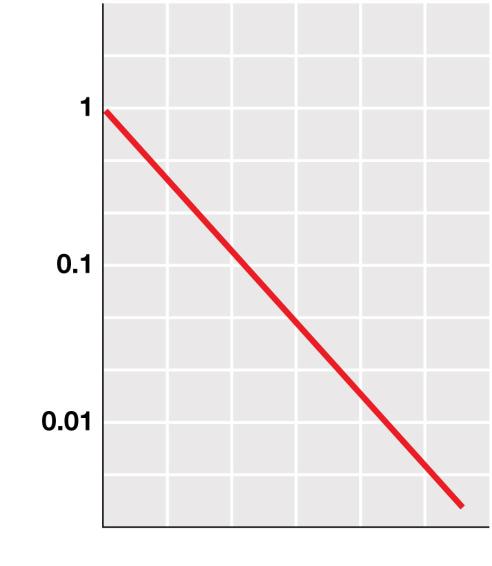
Figure 26.5 Relationship between the survival fraction and the radiation dose of a microorganism
)
elac sgol( noit D10 10% survival
The D10, or decimal reduction dose, can be interpolated from the data as shown.
2012 Pearson Education, Inc.
Marmara University – Enve303 Env. Eng. Microbiology – Prof. BARIŞ ÇALLI
26.2 Radiation Sterilization
• Sources of radiation include cathode ray tubes,
X-rays, and radioactive nuclides
• Radiation is used for sterilization in the medical
field and food industry
– Radiation is approved by the WHO and is used in
the USA for decontamination of foods particularly susceptible to microbial contamination
• Hamburger, chicken, spices may all be irradiated
2012 Pearson Education, Inc.
Marmara University – Enve303 Env. Eng. Microbiology – Prof. BARIŞ ÇALLI

26.3 Filter Sterilization
• Filtration avoids the use of heat on sensitive
liquids and gases
– Pores of filter are too small for organisms to pass
– Pores allow liquid or gas to pass through
• Depth filters
– HEPA filters (Figure 26.6a)
• Membrane filters
– Function more like a sieve (Figure 26.6b and c)
2012 Pearson Education, Inc.
Marmara University – Enve303 Env. Eng. Microbiology – Prof. BARIŞ ÇALLI
Figure 26.6 Microbiological filters
Scanning electron micrograph showing the structure of (a) a depth filter, (b) a
conventional membrane filter, and (c) a nucleopore filter
2012 Pearson Education, Inc.
Marmara University – Enve303 Env. Eng. Microbiology – Prof. BARIŞ ÇALLI
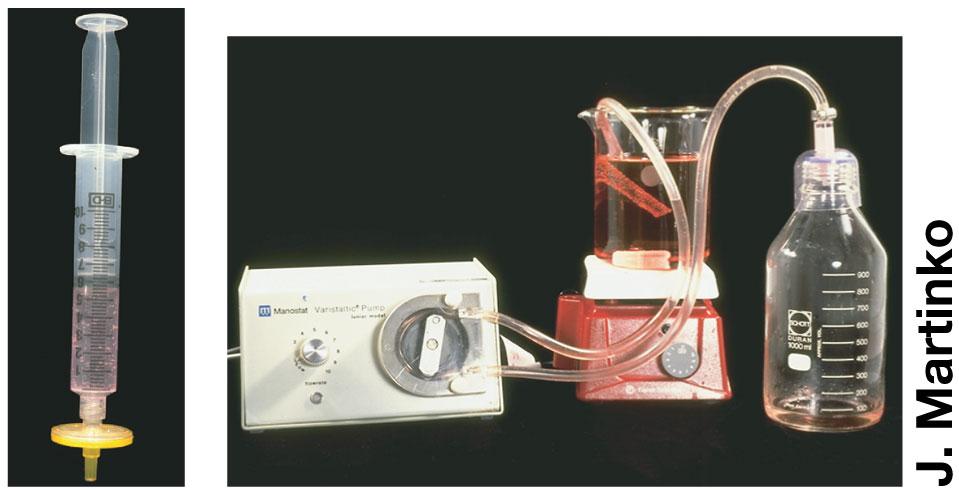
26.3 Filter Sterilization
• Membrane filters (cont'd)
– Filtration can be accomplished by syringe, pump,
or vacuum (Figure 26.7)
– A type of membrane filter is the nucleation track
(nucleopore) filter (Figure 26.8)
2012 Pearson Education, Inc.
Marmara University – Enve303 Env. Eng. Microbiology – Prof. BARIŞ ÇALLI
Figure 26.7 Membrane filters
Disposable, presterilized, and assembled membrane filter units. Left: a filter system
designed for small volumes. Right: a filter system designed for larger volumes
2012 Pearson Education, Inc.
Marmara University – Enve303 Env. Eng. Microbiology – Prof. BARIŞ ÇALLI
Figure 26.8 Scanning electron micrographs of bacteria trapped on nucleopore membrane filters
(a) Aquatic bacteria and algae. The poresize is 5 µm.
(b) Leptospira interrogans. The bacterium is about 0.1 µm in diameter and up to 20 µm in length. The pore size of the filter is 0.2 µm.
2012 Pearson Education, Inc.
Marmara University – Enve303 Env. Eng. Microbiology – Prof. BARIŞ ÇALLI
II. Chemical Antimicrobial Control
• 26.4 Chemical Growth Control• 26.5 Chemical Antimicrobial Agents for
2012 Pearson Education, Inc.
Marmara University – Enve303 Env. Eng. Microbiology – Prof. BARIŞ ÇALLI
26.4 Chemical Growth Control
• Antimicrobial agents can be classified as
bacteriostatic, bacteriocidal, and bacteriolytic(Figure 26.9)
2012 Pearson Education, Inc.
Marmara University – Enve303 Env. Eng. Microbiology – Prof. BARIŞ ÇALLI
Figure 26.9a Bacteriostatic, bacteriocidal, and bacteriolytic antimicrobial agents
• Bacteriostatic agents
Total cell count
are frequently inhibitors
of protein synthesis and
act by binding to
Viable cell count
An antimicrobial
• If the concentration of
agent is added to
the agent is lowered,
growing culture.
the agent is released from the ribosome and
The turbidity of each culture, coupled with viable
• Many antibiotics work
plate counts, establishes the relationship
by this mechanism.
between viable and total cell counts.
2012 Pearson Education, Inc.
Marmara University – Enve303 Env. Eng. Microbiology – Prof. BARIŞ ÇALLI
Figure 26.9b Bacteriostatic, bacteriocidal, and bacteriolytic antimicrobial agents
• Bacteriocidal agents
Total cell count
bind tightly to their
cellular targets, are not
removed by dilution,
and kill the cell.
An antimicrobial
cell count
• The dead cells,
agent is added to
growing culture.
destroyed, and total cell numbers, reflected
by the turbidity of the
The turbidity of each culture, coupled with viable
plate counts, establishes the relationship
between viable and total cell counts.
2012 Pearson Education, Inc.
Marmara University – Enve303 Env. Eng. Microbiology – Prof. BARIŞ ÇALLI
Figure 26.9c Bacteriostatic, bacteriocidal, and bacteriolytic antimicrobial agents
• Some -cidal agents are
also -lytic agents,
killing by cell lysis and
release of cytoplasmic
Total cell count
An antimicrobial
• Lysis decreases the
agent is added to
cell count
viable cell number and
growing culture.
also the total cell number, shown by a
decrease in culture
The turbidity of each culture, coupled with viable
plate counts, establishes the relationshipbetween viable and total cell counts.
• Bacteriolytic agents include antibiotics that inhibit cell wall synthesis,
such as penicillin, and chemicals such as detergents that rupture the cytoplasmic membrane.
2012 Pearson Education, Inc.
Marmara University – Enve303 Env. Eng. Microbiology – Prof. BARIŞ ÇALLI
26.4 Chemical Growth Control
• Minimum inhibitory concentration (MIC) is the
smallest amount of an agent needed to inhibit growth of a microorganism (Figure 26.10)
– Varies with the organism used, inoculum size,
temp, pH, etc.
• Disc diffusion assay
– Antimicrobial agent added to filter paper disc– MIC is reached at some distance
• Zone of inhibition
– Area of no growth around disc
2012 Pearson Education, Inc.
Marmara University – Enve303 Env. Eng. Microbiology – Prof. BARIŞ ÇALLI
Figure 26.10 Antimicrobial agent susceptibility assay using dilution methods
The assay defines the minimum inhibitory concentration (MIC). A series of increasing concentrations of antimicrobial agent is prepared in the culture medium. Each tube is
inoculated with a specific concentration of a test organism, followed by a defined
incubation period. Growth, measured as turbidity, occurs in those tubes with antimicrobial
agent concentrations below the MIC.
2012 Pearson Education, Inc.
Marmara University – Enve303 Env. Eng. Microbiology – Prof. BARIŞ ÇALLI
Figure 26.11 Antimicrobial agent susceptibility assay using diffusion methods
agar plate
with a liquid
culture of a test
organism
Discs containing
antimicrobial
agents are placed
on surface
Incubate for 24–48 h
Test organism shows
The antimicrobial agent
susceptibility to some
diffuses from disks into
agents, indicated by
the surrounding agar,
inhibition of bacterial
inhibiting growth of test
growth around discs
(zones of inhibition)
2012 Pearson Education, Inc.
Marmara University – Enve303 Env. Eng. Microbiology – Prof. BARIŞ ÇALLI
26.5 Chemical Antimicrobial Agents for
• These antimicrobial agents can be divided into two
– Products used to control microorganisms in
commercial and industrial applications
• Examples: chemicals in foods, air-conditioning
cooling towers, textile and paper products, fuel tanks
– Products designed to prevent growth of human
pathogens in inanimate environments and on external body surfaces
• Sterilants, disinfectants, sanitizers, and antiseptics
2012 Pearson Education, Inc.
Marmara University – Enve303 Env. Eng. Microbiology – Prof. BARIŞ ÇALLI
26.5 Chemical Antimicrobial Agents for
• Sterilants: Chemical sterilants, also called
sterilizers or sporicides, destroy all forms of microbial life, including endospores.
– Chemical sterilants are used in situations where it is
impractical to use heat or radiation for decontamination or sterilization.
– Liquid sterilants such as a sodium hypochlorite
solution or amylphenol are used for instruments that cannot withstand high temperatures or gas.
2012 Pearson Education, Inc.
Marmara University – Enve303 Env. Eng. Microbiology – Prof. BARIŞ ÇALLI
26.5 Chemical Antimicrobial Agents for
• Hospitals and laboratories, must be able to
decontaminate and sterilize heat-sensitive materials, such as;
– thermometers– lensed instruments– polyethylene tubing and – reusable medical equipment.
2012 Pearson Education, Inc.
Marmara University – Enve303 Env. Eng. Microbiology – Prof. BARIŞ ÇALLI
26.5 Chemical Antimicrobial Agents for
• Disinfectants: are chemicals that kill
microorganisms, but not necessarily endosporesand are used on inanimate objects.
– Disinfectants such as ethanol and cationic
detergents are used to disinfect floors, tables, bench tops, walls, etc. and important for infection control in hospitals.
– General disinfectants are used in households,
swimming pools and water purification systems
2012 Pearson Education, Inc.
Marmara University – Enve303 Env. Eng. Microbiology – Prof. BARIŞ ÇALLI
26.5 Chemical Antimicrobial Agents for
• Sanitizers: are agents that reduce, but may not
eliminate, microbial numbers to levels considered to be safe.
– Food contact sanitizers are widely used in the food
industry to treat surfaces such as mixing and cooking equipment, dishes and utensils.
– Non–food contact sanitizers are used to treat
surfaces such as counters, floors, walls, carpets, and laundry.
2012 Pearson Education, Inc.
Marmara University – Enve303 Env. Eng. Microbiology – Prof. BARIŞ ÇALLI
26.5 Chemical Antimicrobial Agents for
• Antiseptics and germicides are chemical agents
that kill or inhibit growth of microorganisms and that are nontoxic enough to be applied to living tissues.
– Most of the compounds in this category are used
for handwashing or for treating surface wounds.
– Certain antiseptics are also effective disinfectants;
they are effective antimicrobial agents when applied to inanimate surfaces.
2012 Pearson Education, Inc.
Marmara University – Enve303 Env. Eng. Microbiology – Prof. BARIŞ ÇALLI
Figure 2 Handwashing
Handwashing is the easiest and one of the most important interventions
to prevent pathogen spread in healthcare, home and laboratory
settings. This handwash station is in a clinical laboratory.
2012 Pearson Education, Inc.
Marmara University – Enve303 Env. Eng. Microbiology – Prof. BARIŞ ÇALLI
26.5 Chemical Antimicrobial Agents for
• Ethanol, is categorized as an antiseptic, but can
also be a disinfectant.
• This depends on the concentration of ethanol
used and the exposure time, with disinfection generally requiring higher ethanol concentrationsand exposure times of several minutes.
2012 Pearson Education, Inc.
Marmara University – Enve303 Env. Eng. Microbiology – Prof. BARIŞ ÇALLI
26.5 Chemical Antimicrobial Agents for
• Antimicrobial Efficacy
– Several factors affect the efficacy of chemical
antimicrobial agents.
– For example, many disinfectants are neutralized
by organic material.
– These materials reduce effective disinfectant
concentrations and microbial killing capacity.
2012 Pearson Education, Inc.
Marmara University – Enve303 Env. Eng. Microbiology – Prof. BARIŞ ÇALLI
26.5 Chemical Antimicrobial Agents for
• Antimicrobial Efficacy (cont'd)
– Pathogens are often encased in particles or grow
in large numbers as biofilms, covering surfaces of tissue or medical devices with several layers of microbial cells.
– Biofilms may slow or even completely prevent
penetration of antimicrobial agents, reducing or negating their effectiveness.
2012 Pearson Education, Inc.
Marmara University – Enve303 Env. Eng. Microbiology – Prof. BARIŞ ÇALLI
26.5 Chemical Antimicrobial Agents for
• Antimicrobial Efficacy (cont'd)
– Only sterilants are effective against bacterial
– Endospores are much more resistant to other
agents than are vegetative cells because of their low water availability and reduced metabolism.
– Mycobacterium tuberculosis, the causal agent of
tuberculosis, are resistant to disinfectants because of the waxy nature of their cell wall.
2012 Pearson Education, Inc.
Marmara University – Enve303 Env. Eng. Microbiology – Prof. BARIŞ ÇALLI
26.5 Chemical Antimicrobial Agents for
2012 Pearson Education, Inc.
Marmara University – Enve303 Env. Eng. Microbiology – Prof. BARIŞ ÇALLI
26.5 Chemical Antimicrobial Agents for
2012 Pearson Education, Inc.
Marmara University – Enve303 Env. Eng. Microbiology – Prof. BARIŞ ÇALLI
III. Antimicrobial Agents Used In Vivo
• 26.6 Synthetic Antimicrobial Drugs• 26.7 Naturally Occurring Antimicrobial Drugs:
• 26.8 -Lactam Antibiotics: Penicillins and
• 26.9 Antibiotics from Prokaryotes
2012 Pearson Education, Inc.
Marmara University – Enve303 Env. Eng. Microbiology – Prof. BARIŞ ÇALLI
III. Antimicrobial Agents Used In Vivo
• Antimicrobial drugs are classified on the basis of
– Molecular structure – Mechanism of action (Figure 26.12)– Spectrum of antimicrobial activity (Figure 26.13)
2012 Pearson Education, Inc.
Marmara University – Enve303 Env. Eng. Microbiology – Prof. BARIŞ ÇALLI
Figure 26.12 Mode of action of some major antimicrobial agents
Cell wall synthesis
DNA gyrase
DNA-directed RNA polymerase
Folic acid metabolism
structure and function
Cytoplasmic Cell wall
Agents are classified according to their target structures in the bacterial cell.
2012 Pearson Education, Inc.
Marmara University – Enve303 Env. Eng. Microbiology – Prof. BARIŞ ÇALLI
26.6 Synthetic Antimicrobial Drugs
• Paul Ehrlich studied selective toxicity in the early
– Selective toxicity is ability to inhibit or kill a
pathogen without affecting the host
– Salvarsan – one of the first antimicrobial drugs
• Growth factor analogs are structurally similar to
growth factors but do not function in the cell
– Analogs similar to vitamins, amino acids, and
2012 Pearson Education, Inc.
Marmara University – Enve303 Env. Eng. Microbiology – Prof. BARIŞ ÇALLI
Figure 26.14 Annual worldwide production and use of antibiotics
Each year an estimated 10,000 metric tons of antimicrobial agents are manufactured
worldwide. The β-lactam antibiotics include cephahalosporins (30%), penicillins (7%), and
other β-lactams (15%). "Others" includes tetracyclines, aminoglycosides, and all other
antimicrobial drugs
2012 Pearson Education, Inc.
Marmara University – Enve303 Env. Eng. Microbiology – Prof. BARIŞ ÇALLI
26.7 Naturally Occurring Antimicrobial
Drugs: Antibiotics
• Antibiotics are naturally produced antimicrobial
– Less than 1% of known antibiotics are clinically
• Can be modified to enhance efficacy (semisynthetic)
• The susceptibility of microbes to different antibiotics
– Gram-positive and gram-negative bacteria vary in
their sensitivity to antibiotics
– Broad-spectrum antibiotics are effective against both
groups of bacteria
2012 Pearson Education, Inc.
Marmara University – Enve303 Env. Eng. Microbiology – Prof. BARIŞ ÇALLI
26.8 -Lactam Antibiotics: Penicillins
and Cephalosporins
• -Lactam antibiotics are one of the most important
groups of antibiotics of all time
– Include penicillins, cephalosporins, and
– Over half of all antibiotics used worldwide
• Penicillins
– Discovered by Alexander Fleming– Primarily effective against gram-positive bacteria– Some synthetic forms are effective against some
gram-negative bacteria
– Target cell wall synthesis
2012 Pearson Education, Inc.
Marmara University – Enve303 Env. Eng. Microbiology – Prof. BARIŞ ÇALLI
26.9 Antibiotics from Prokaryotes
• Many antibiotics effective against Bacteria are
also produced by Bacteria
• These antibiotics include:
– Aminoglycosides– Macrolides– Tetracyclines– Daptomycin– Platensimycin
• They have major clinical applications
2012 Pearson Education, Inc.
Marmara University – Enve303 Env. Eng. Microbiology – Prof. BARIŞ ÇALLI
Source: http://mebig.marmara.edu.tr/Enve303/Chapter26.pdf
DEPARTMENT OF DEFENSE MANNED SPACE FLIGHT SUPPORT OFFICE SPACE SHUTTLE MEDICAL PERSONNEL GUIDE This guide is intended only as a field reference for DOD physicians, emergencymedical technicians (EMT's) and pararescue personnel who provide contingencymedical support to Space Shuttle operations throughout the world. It is notintended to replace the Department of Defense Manager's Space ShuttleContingency Functional Plan, nor other definitive NASA or DDMS documents.Information in this booklet is accurate at the time of publication.
Drinks: Good Hosts The very name sends pleasurable sensations down one's throat! These drinks are everywhere, in myriad avatars - sending celebrities into swoons or into undertaking death defying feats!Sparkling and twinkling, creating a fizzy haze, making consumers down vast quantities of junk food, helped by the pleasurable gulps. We tested 16 brands - a merry mix of colas and orange drinks, the sparkling variety and








